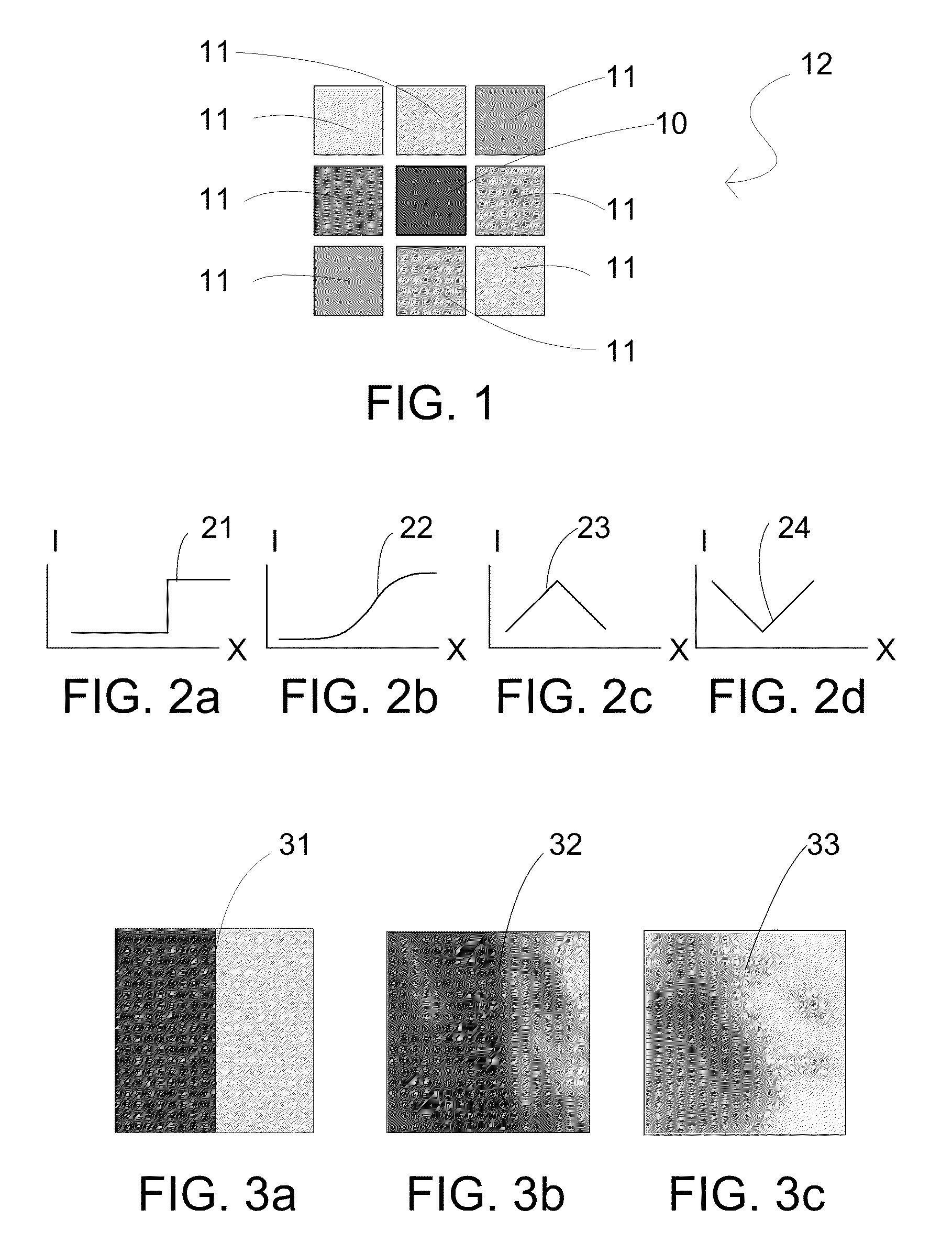Blind restoration of images degraded by isotropic blur
a technology of isotropic blur and restoration, applied in image enhancement, image analysis, instruments, etc., can solve the problems of not teaching or suggesting efficient background art, and achieve the effect of reducing noise artifacts and improving the signal to noise ratio (snr)
- Summary
- Abstract
- Description
- Claims
- Application Information
AI Technical Summary
Benefits of technology
Problems solved by technology
Method used
Image
Examples
Embodiment Construction
[0159]The present invention is a system and efficient method for estimating the atmospheric PSF from the degraded image itself, under the assumption of a linear space-invariant degradation process and isotropic statistical properties of the blur. The method, according to the present invention, is based on deriving the PSF automatically from the appropriate (closest to ideal) step-edge in the degraded image. Because step-edges exist in many images, this technique can often be used. The algorithm was applied to both simulated and real atmospherically degraded images. Restoration results, using the estimated PSF, show significantly improved images. This method can be applied to any isotropic blur such as out of focus and diffraction. A generalization of this approach can be performed for non isotropic blur where step edges exist in the image in different orientations.
[0160]The principles and operation of a system and a method for automatic restoration of isotropic degradations of a dig...
PUM
 Login to View More
Login to View More Abstract
Description
Claims
Application Information
 Login to View More
Login to View More - R&D
- Intellectual Property
- Life Sciences
- Materials
- Tech Scout
- Unparalleled Data Quality
- Higher Quality Content
- 60% Fewer Hallucinations
Browse by: Latest US Patents, China's latest patents, Technical Efficacy Thesaurus, Application Domain, Technology Topic, Popular Technical Reports.
© 2025 PatSnap. All rights reserved.Legal|Privacy policy|Modern Slavery Act Transparency Statement|Sitemap|About US| Contact US: help@patsnap.com



